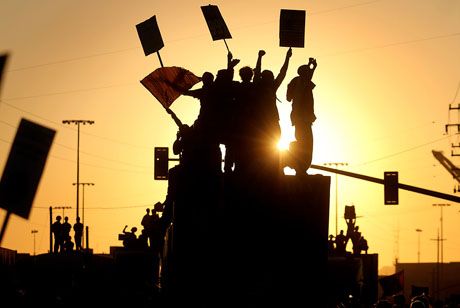News
You are here
Egypt: bloodshed countering the revolution

May 3, 2012
While at least 11 people were killed in Abbassia during clashes at a protest in front of the Ministry of Defense, the Supreme Council of Armed Forces (SCAF) deliberately left the security of people in the hand of demonstrators.
The temporary military leaders of Egypt denied any involvement with the clashes on Wednesday. At the same time, they showed no effort in stopping bloodshed. Thugs, suspected to be supporters of the SCAF, attacked a sit-in protest using knives, guns, and even teargas. What made protestors suspect that the assailants are supporters of the state is the teargas attack, according to eyewitnesses. It is impossible for ordinary civilians to have access to teargas that is usually used by the government forces in crackdowns against protestors.
Many media outlets claim that the majority of protestors were ultraconservative Islamists demonstrating against the disqualification of their representative, Hazem Abu Ismael. However, that is not fully true. Amongst protestors were revolutionary activists, representatives of several political movements, and ordinary citizens protesting against military rule. To counter the revolution, extreme Salafist groups joined protests in an attempt to direct the attention of the media away from the majority of peaceful protestors. Mohamed Al-Zawahiri, brother of Al-Qaeda leader Ayman Al-Zawahiri, was seen with the Salafists demanding to apply what he referred to as “Sharia law.”
On Thursday, at least 25 revolutionary movements and political groups organized marches and rallies in solidarity with the victims and protestors in Abbassia. Attempts of countering the revolution, whether by SCAF or extremists, will not be successful as more Egyptian revolutionaries and ordinary citizens unite demanding an end to the military rule and transparent presidential elections.
Section:
Topics:
- Log in to post comments










